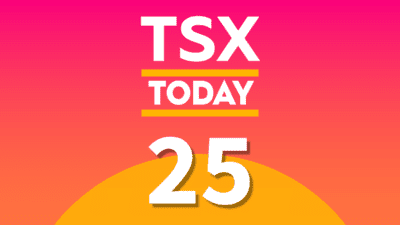The TSX Index, Canada’s benchmark for publicly traded equities, closed the week in the black for the second straight week and the third in the past five.
Yet there are lot of things that investors will need to pay close attention to as the next week’s trading opens.
Here are three of them.
The threat of an inverted yield curve
Following a period of a couple of months where it looked like a sure bet that interest rates were set to rise, central bankers have begun to reverse that course, including a interest rate cut by the Federal Reserve on July 31 — the first rate cut going back all the way to 2008.
Now, investors are expecting — and calling for — even more rate cuts to stimulate the economy and ward off the threat of higher tariffs and ongoing trade tensions.
The problem is, however, that the yield curve on government bonds is now at risk of becoming inverted — an indicator that has proven to be a reliable predictor of several of the past economic recessions.
Occasionally, yield curves will invert — temporarily — from time to time; however, investors will definitely want to watch the bond markets closely next week, as a definitive move to indicate an inverted yield curve could spell a significant sea change to the market’s current direction.
Housing prices and housing starts
On Tuesday, the market will get a report on the number of housing starts that took place in August as well as the number of building permits that were issued during July.
And on Thursday, the market is set to get another report on the change in Canada’s new housing price index.
The state of Canada’s housing market has been a hotly contested debate for years now.
You can bet that both reports will be watched closely by market professionals in order to gauge the level of capital spending going on in the economy and the level and direction of change among investors’ confidence.
U.S. jobless report and retail sales
Even though these reports will measure the level of economic activity in the United States and not that of Canada’s, our countries two economies are so closely interrelated that even as a Canadian investor living in Canada, it’s difficult, if not downright foolish (note, not Foolish) to ignore what’s happening with our larger neighbours south of the 49th.
Next week’s jobless report, set to come out Thursday, and Friday’s report on retail sales will be important data inputs that will go into the Fed’s next interest rate decision, which will naturally have implications for what Steve Poloz and the Bank of Canada do next.
Foolish bottom line
Markets don’t die of old age, but old age does make them more vulnerable.
We are now in the 10th year of our current bull market, and the cracks that we’re starting to see in the markets, even though they may seem minor or inconsequential, may be harbingers of what could be coming down the pike.
Investors will surely want to stay on top of the news and the aforementioned economic reports as the week progresses to ensure they’re staying on top of the investments they’re holding in their TFSA or RRSP accounts.








